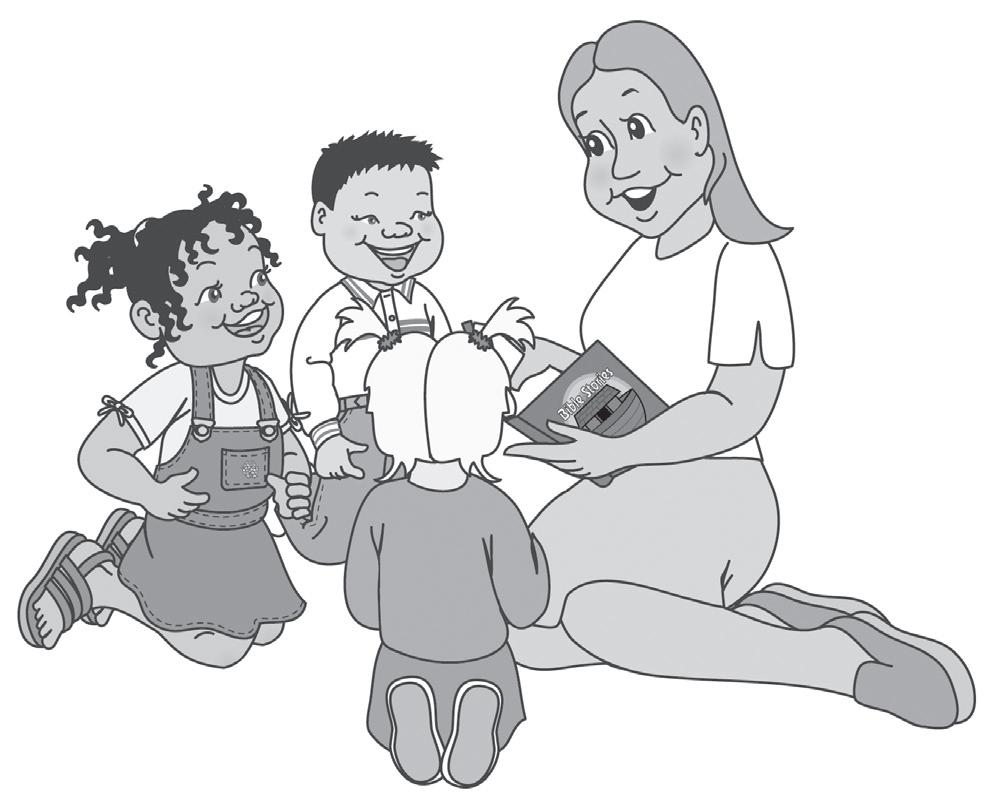
4 minute read
Teacher Skill Builder: Letting Them Learn
Letting Them Learn
A Basic Guide to Understanding Learning Styles Dr. Sandy Friesen, Ph.D.
Over the years, understanding children and our roles in their development has been passionately debated. For the purpose of this article, we make the following assumptions:
Children are probably born with temperament tendencies, learning styles, and personality preferences. Parents and teachers are responsible to guide, direct, and help children fulfill Christ’s commission to love God and love others.
Where does the teacher begin in the process of developing the child?
Historically, training a child meant the process was emphasized and the child was adapted to the process. In recent years, a paradigm shift has taken place. We began to think about “training” differently. This new paradigm emphasizes understanding the individual child. An important understanding has resulted—we now know individuals develop learning preferences that stay relatively constant throughout their lives. We call this their “learning styles.”
Discover who the child is.
By using the latest research, we can glean important understanding. Several learning style models are relevant to the development and teaching of children. Children have preferences (much like being right-handed or left-handed) that they favor throughout their lives.
One of the most influential factors in a child’s learning is the sense (hearing, sight, touch, experiential) through which a child learns most effectively.
Auditory children learn through hearing.
Auditory children perceive the world through sounds. They listen attentively (unless they are familiar with the information, at which point they may become bored). These learners rarely take notes and do not ask for a written copy, map, or pictorial presentation. The auditory teacher will use auditory language to communicate, i.e., “Is everyone listening?”
Visual learners process information through sight.
These children “see” the world. They notice classroom decorations and enjoy videos, TV, books, and pictures. They notice what people wear, colors, and designs. They watch what you do. The visual teacher will use visual language, i.e., “I need everyone’s eyes on me.”
Tactual learners explore the world through touch.
For these children to grasp new and difficult information, they need to “get in touch” with the concept. For example, if you were trying to teach the difference between “soft”
and “rough,” the child would need to touch a piece of cotton and a piece of sandpaper. Feeling and comparing would bring about quick, effective learning. Another aspect of tactual learners is their need to “feel good” about what they are learning. While some children may not care if the information pertains to them, some tactual children find this an important aspect of the process. The tactual teacher will communicate tactually, i.e., “Are you all grasping this information?”
Kinesthetic students prefer large body movement or an actual experience.
For these children to grasp information, they need to act it out, i.e., run in place while thinking about the concept. They may use their bodies to become a “storm at sea.” To experience learning, these children need to walk through the process for new and difficult information. For example, if you were making chocolate chip cookies, merely hearing the instructions would not teach these children. Seeing the instructions would not make a lasting impression, just as touching a cookie would not help them learn. These children would need to make cookies. The kinesthetic teacher communicates kinesthetically, i.e., “Are you all getting into this?”
The most commonly misunderstood children are the “touch dominant” children. They exhibit several of the tactual and kinesthetic qualities of learning. They keep teachers on their toes.
Young children tend to favor a multi-modal approach to learning.
All senses should be stimulated to encourage a full range of skills in the developing child. However, understanding learning preferences will help teachers understand the choices made by some of their more difficult students.
For example, Joshua is auditory. Teaching Joshua is a pleasant experience. He takes verbal instruction well. When the teacher says, “Joshua, it’s story time; come and sit down,” Joshua runs to take his seat, usually clapping enthusiastically.
On the other hand, Heather is a tactualkinesthetic child. She walks around touching, pulling, and knocking over everybody and everything in sight. When instructed to sit down to listen to the story, she acts as if she hasn’t heard you. This is the child who makes every teacher (and parent) understand why they need a good dose of patience and a healthy grasp of how to deal with the tactually difficult child.
The learning style of a child is as individual as his fingerprint. We cannot begin to say that each classroom will meet each student’s needs. That would not be possible and is not healthy for the developing child who will have to learn to deal with incongruencies in life. What we can encourage is that as you deal with a difficult child (the child who does not “fit in,” does not cope well, or is labeled as “difficult”), that you take into consideration the elements over which you have some control. As you look at these elements, decide if there’s anything you can do to help this child be a success.
Our role as Christian educators is to fulfill Christ’s commands to make disciples. We can learn effective ways to do this.



